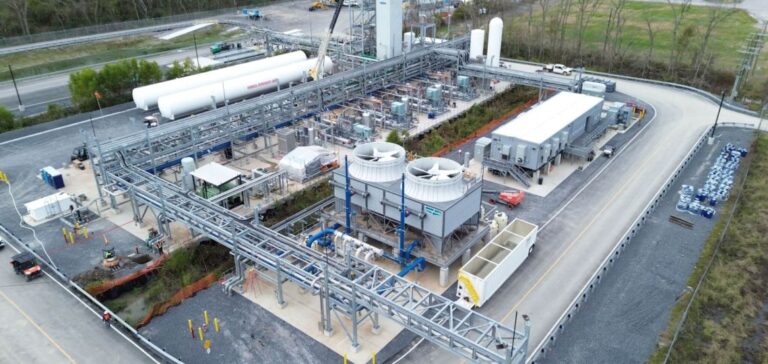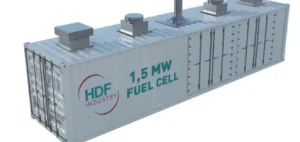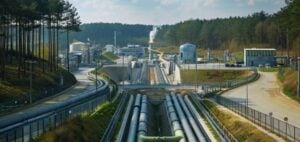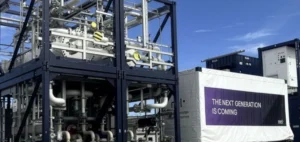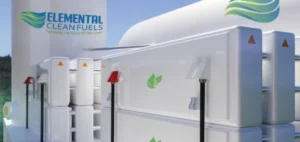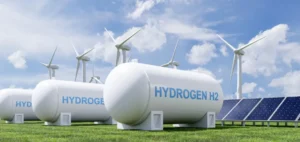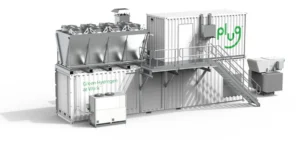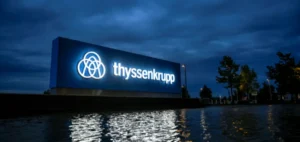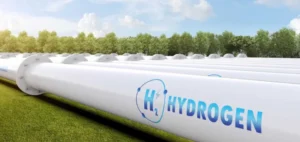Olin Corporation announced the commissioning of a 15-ton-per-day (TPD) hydrogen liquefaction plant in St. Gabriel, Louisiana, by its joint venture Hidrogenii, formed with Plug Power Inc. This site, one of the largest of its kind in North America, marks a significant step in strengthening the regional hydrogen supply chain and supporting the acceleration of the low-carbon energy transition in the United States.
The facility is designed to liquefy hydrogen produced by Olin, intended for shipment by tank trucks across the country. This fuel will primarily serve Plug Power’s material handling customers, leveraging the company’s innovative spot pricing system. At full capacity, the plant will be able to liquefy up to 15 TPD, bringing Plug Power’s total production capacity to 40 TPD.
Andy Marsh, CEO of Plug Power, stated: “This Louisiana plant, a major milestone for our U.S. hydrogen network, strengthens our financial position by tapping into a reliable and cost-effective hydrogen source, reducing our reliance on third-party suppliers.”
Ken Lane, President and CEO of Olin, added: “This joint venture aligns perfectly with our value-first strategy, aiming to build on our leadership positions by leveraging high-value adjacencies and bolt-ons, while adhering to our capital allocation framework.”
This facility is a key component of Olin and Plug Power’s strategy to meet the growing hydrogen demand, particularly in industrial and energy sectors, while supporting the country’s energy transition goals.
Strengthening the hydrogen supply
The commissioning of this plant marks a significant strategic development for Plug Power, expanding its hydrogen production network in the southern United States. The increased liquefaction capacity will allow the company to better meet the growing needs of its customers while optimising costs and supply security.
Impact on the U.S. hydrogen market
This project fits within the broader context of the U.S. energy transition, where hydrogen is seen as a key alternative to fossil fuels. The enhanced production and distribution capacity of liquefied hydrogen will support a wide range of industries, from logistics to power generation, while facilitating the adoption of low-carbon technologies.


